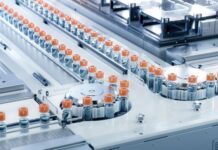Factory automation has revolutionized modern manufacturing by leveraging advanced technologies to enhance productivity, efficiency, and precision. By integrating systems such as robotics, sensors, and artificial intelligence (AI), manufacturers can achieve significant cost reductions while simultaneously increasing output. Consegic Business Intelligence analyzes that factory automation market size is estimated to reach over USD 605.06 Billion by 2031 from a value of USD 309.43 Billion in 2023 and is projected to grow by USD 334.87 Billion in 2024, growing at a CAGR of 8.7% from 2024 to 2031. This article delves into the top benefits of factory automation, focusing on its technical aspects and transformative potential.
Enhanced Productivity and Operational Efficiency
One of the most notable advantages of factory automation is the significant boost in productivity. Automated systems can operate continuously without downtime, unlike human labor, which is subject to fatigue and working hours. Industrial robots equipped with multi-axis movement and advanced control systems perform repetitive tasks with unmatched speed and precision. Technologies such as cobots (collaborative robots) allow seamless interaction with human workers, enabling complex assembly tasks and improving overall line efficiency. Automation systems integrated with AI can analyze production data in real-time, identifying bottlenecks and inefficiencies. Machine learning algorithms enable predictive maintenance, reducing unexpected downtime by preemptively addressing equipment failures.
Cost Reduction Through Optimized Resource Utilization
Automation leads to substantial cost savings by minimizing material waste and improving resource management. Computer Numerical Control (CNC) machines and 3D printing technologies ensure precise material usage, reducing scrap rates significantly. These systems employ advanced algorithms to optimize cutting paths and layering processes, maximizing material efficiency. Modern automated factories utilize smart energy management systems that dynamically adjust power consumption based on real-time demand. For instance, variable frequency drives (VFDs) in motors optimize energy usage by modulating speeds during low-demand periods, reducing utility costs.
Improved Quality and Consistency
Automation minimizes human error, ensuring consistent product quality and adherence to specifications. Automated quality control systems equipped with high-resolution cameras and sensors perform real-time inspections. These systems identify defects such as surface irregularities or dimensional deviations with sub-micron accuracy, ensuring superior product quality. Programmable logic controllers (PLCs) and distributed control systems (DCS) ensure that every production cycle adheres to pre-defined parameters. This standardization eliminates variability and ensures uniformity across large production volumes.
Scalability and Flexibility in Production
Automated systems provide unparalleled flexibility, enabling manufacturers to quickly adapt to market demands. Factory automation solutions often feature modular designs that allow manufacturers to scale operations without significant downtime. For instance, adding robotic cells to an assembly line can increase capacity without overhauling the entire system. Through the integration of IoT and digital twin technology, automated factories can simulate production scenarios and reconfigure workflows in response to demand shifts. This agility is particularly valuable in industries with fluctuating consumer trends.
Enhanced Workplace Safety
Automation reduces the need for human intervention in hazardous tasks, ensuring a safer working environment. Automated systems can handle dangerous operations, such as welding, chemical handling, or heavy lifting, reducing the risk of workplace injuries. Advanced automation includes sensors and AI-based monitoring that detect unsafe conditions, such as equipment malfunctions or environmental hazards, enabling proactive safety measures.
Conclusion
Factory automation has become an indispensable part of modern manufacturing, offering benefits that go beyond cost reduction and output enhancement. From improved productivity and resource optimization to superior quality control and safety, automation technologies empower manufacturers to remain competitive in a rapidly evolving market. As advancements in AI, robotics, and IoT continue, the potential of factory automation will only expand, driving innovation and operational excellence across industries.
Source: Factory Automation Market
















